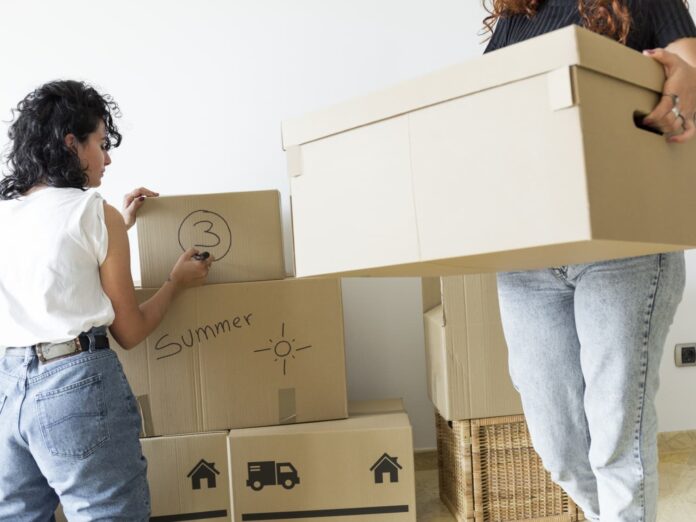Minimalist Moving: How to Downsize Your Belongings Before a Move
Moving can be a stressful and overwhelming experience. It’s not just the actual move itself, but also the process of packing up all of your belongings and deciding what to take with you.
That’s where minimalist moving comes in. By decluttering and downsizing your belongings before a move, you can make the process easier and more efficient.
In this article, we’ll show you how to downsize your belongings before a move with our ultimate guide to minimalist moving.
We’ll cover everything from the benefits of minimalist moving to the best packing techniques. So, whether you’re moving across town or across the country, read on to learn how to make your move as stress-free as possible.
Benefits of Minimalist Moving
Before we dive into the specifics of downsizing, let’s talk about why minimalist moving is beneficial.
Less Stress During the Moving Process
One of the biggest benefits of minimalist moving is that it can reduce stress during the moving process. When you have fewer belongings to pack and move, you’ll feel more organized and in control. You won’t have to worry about fitting everything into your new space or whether you’ll be able to find something once you’re unpacked.
Saving Time and Money
One way to save time and money during a move is to hire a moving company with trusted resources like PricingVanLines.
A reputable moving company can help you streamline the moving process and ensure that your belongings are transported safely and efficiently. They can also provide packing supplies and services, which can save you time and hassle.
Creating a Fresh Start in a New Space
Finally, minimalist moving can help you create a fresh start in your new space. By getting rid of items you no longer need or use, you’ll be able to start with a clean slate. You can decorate your new space with intention and purpose, rather than just filling it with the same clutter you had in your old space.
Getting Started with Minimalist Moving
Now that we’ve covered the benefits of minimalist moving, let’s talk about how to get started.
Determine Your New Space Requirements
The first step in downsizing is to determine your new space requirements. Take a look at your new space and think about what you’ll need to live comfortably. This will help you decide what items to keep and what to get rid of.
Develop a Realistic Timeline for Downsizing
Once you know what you’ll need in your new space, it’s time to develop a realistic timeline for downsizing. Depending on how much you need to declutter, this could take weeks or even months. Be sure to give yourself enough time to go through all of your belongings without feeling rushed.
Set Goals for the Decluttering Process
Finally, set goals for the decluttering process. This will help you stay focused and motivated as you go through your belongings. For example, you could aim to declutter one room per week or donate a certain number of items each day.
Sorting and Categorizing Belongings
Once you have a plan in place, it’s time to start sorting and categorizing your belongings.
The KonMari Method for Decluttering
The KonMari Method, developed by Marie Kondo, is a popular method for decluttering. The method involves going through all of your belongings and asking yourself whether each item sparks joy. If it doesn’t, it’s time to let it go.
The Four-Box Method for Sorting Items
Another popular method for sorting items is the four-box method. With this method, you create four boxes labeled “keep,” “donate,” “sell,” and “trash.”
As you go through your belongings, you place each item into one of the four boxes based on whether you want to keep it, donate it, sell it, or throw it away.
Tips for Categorizing Items Effectively
No matter which method you use for decluttering, it’s important to categorize your items effectively. This means grouping similar items together so that you can make decisions about them more easily. For example, you might group all of your clothing together or all of your kitchen gadgets.
Deciding What to Keep
Now that you’ve sorted and categorized your belongings, it’s time to decide what to keep.
Evaluating Sentimental Items
One of the hardest parts of downsizing is deciding what to do with sentimental items. It’s okay to keep some sentimental items, but it’s important to be selective.
Ask yourself whether each sentimental item truly adds value to your life or if it’s just taking up space. If it’s the latter, it’s time to let it go.
Guidelines for Keeping Clothing and Accessories
When it comes to clothing and accessories, it’s important to be ruthless. Ask yourself whether you’ve worn the item in the past year and whether you’re likely to wear it in the future. If the answer is no, it’s time to donate or sell it.
Deciding Which Furniture to Bring
Finally, when it comes to furniture, consider the size and layout of your new space. If a piece of furniture won’t fit or won’t be functional in your new space, it’s time to let it go.
Selling and Donating Unwanted Items
Now that you’ve decided what to get rid of, it’s time to sell or donate those unwanted items.
Selling Items Online or at a Yard Sale
There are many online platforms you can use to sell unwanted items, such as Facebook Marketplace, Craigslist, and eBay. You can also hold a yard sale to sell items in person.
Donating to Charity or Local Shelters
Donating unwanted items to charity or local shelters is another option. This is a great way to give back to your community while also decluttering your home.
Recycling or Disposing of Items Responsibly
Finally, if you have items that can’t be sold or donated, be sure to dispose of them responsibly. This might mean recycling certain items or taking them to a hazardous waste disposal facility.
Minimalist Packing Techniques
Once you’ve downsized your belongings, it’s time to pack them up for the move.
Using Space-Saving Packing Supplies
One of the best ways to maximize space when packing is to use space-saving packing supplies, such as vacuum-sealed bags and packing cubes. These supplies can help you fit more items into each box and also keep them organized.
Packing Items in an Organized Manner
When packing, it’s important to pack items in an organized manner. This means packing similar items together and labeling each box with its contents. This will make it easier to unpack once you’re in your new space.
Labeling Boxes for Easy Unpacking
Speaking of labeling, be sure to label each box with its contents and the room it belongs in. This will make it easier for the movers to place each box in the correct room and also make it easier for you to unpack once you’re in your new space.
Moving Day Checklist
Moving day can be chaotic, but with a little preparation, you can make it go as smoothly as possible.
Confirming Details with the Moving Company
Before moving day, be sure to confirm all of the details with the moving company. This includes the date and time of the move, as well as any special instructions they may have.
Organizing Boxes for Loading
On a moving day, make sure your boxes are organized and ready to go. Label each box with its contents and the room it belongs in, and stack them in a convenient location for the movers to load onto the truck.
Preparing Your Old and New Spaces for Moving Day
Finally, make sure both your old and new spaces are prepared for moving day. This means clearing a path for the movers, protecting floors and walls, and making sure everything is packed and ready to go.
Tips for Moving with Minimalist Belongings
Once you’ve moved into your new space, it’s important to maintain a minimalist mindset.
Maximizing Space in Your New Home
One of the best ways to maintain a minimalist lifestyle is to maximize space in your new home. This means being intentional about what you bring into your space and finding creative storage solutions for the items you do have.
Keeping a Minimalist Mindset
Another important part of moving with minimalist belongings is to keep a minimalist mindset. This means being mindful of what you bring into your home and being intentional about what you keep.
Maintaining Your New Clutter-Free Lifestyle
Finally, to maintain your new clutter-free lifestyle, it’s important to stay organized and keep up with decluttering. Make it a habit to go through your belongings regularly and get rid of anything you no longer need or use.
Frequently Asked Questions
Can I still keep sentimental items during minimalist moving?
Yes, you can still keep sentimental items during minimalist moving. However, it’s important to be selective and only keep items that truly add value to your life.
What do I do with items I don’t want to sell or donate?
If you have items that you don’t want to sell or donate, you can recycle or dispose of them responsibly. Check with your local waste disposal facility for guidelines on how to do this.
How do I downsize my furniture effectively?
To downsize your furniture effectively, consider the size and layout of your new space. If a piece of furniture won’t fit or won’t be functional in your new space, it’s time to let it go.
How do I pack fragile items for the move?
When packing fragile items, be sure to wrap them in bubble wrap or packing paper and label the box as “fragile.” You can also use towels or blankets to add extra padding.
What should I do with items I’m unsure about keeping or getting rid of?
If you’re unsure about whether to keep or get rid of an item, consider putting it in a separate box labeled “undecided.” You can go back to this box later and make a decision once you’ve had more time to think about it.
Start Fresh with Minimalist Moving
Moving can be stressful, but with the right mindset and techniques, it doesn’t have to be. By downsizing your belongings before a move, you can save time, money, and stress, and start fresh in your new space. Use the tips and techniques in this ultimate guide to minimalist moving to make your move as smooth as possible.


















